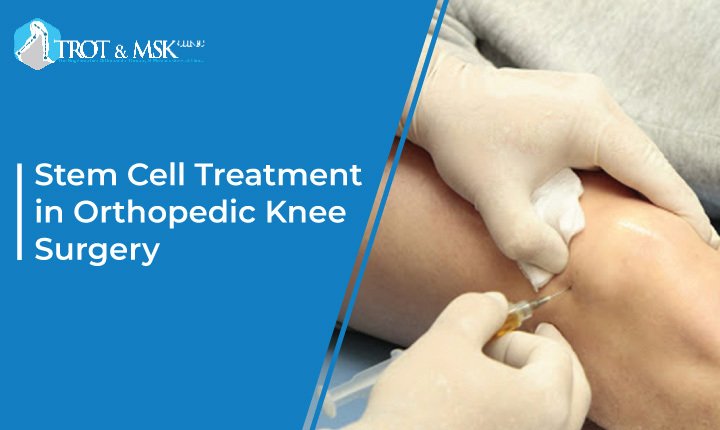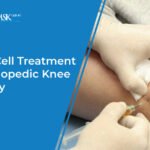Orthopedic conditions, especially those affecting the knee are being treated in a completely new way thanks to stem cell therapy. Stem cells are used in the therapy, particularly MSCs since they are regenerative. This indicates that the therapy has promise for the management of conditions including osteoarthritis and ligament damage. It is also thought of as a revolutionary treatment in knee orthopaedics since stem cells, which have the capacity to develop into three different cell types, may be crucial to the functioning of the knee. Experience advanced orthopedic knee surgery in Karachi with Dr. Shohab’s cutting-edge stem cell therapy in Karachi for effective and innovative treatment. We shall go over the mechanism and its clinical preferences in this blog.
The Stem Cell Therapy Mechanism
The potential of mesenchymal stem cells to develop into cell types crucial for knee functioning, such cartilage and bone cells, makes them attractive. These stem cells are mainly obtained from tissue such as bone marrow and adipose tissue. Upon injection into the knee joint afflicted with arthritis, MSCs settle into injured regions and initiate a multifaceted reparative procedure.
Once reaching the site of damage, MSCs have the ability to differentiate into chondrocytes, which are in charge of forming cartilage. In osteoarthritis, which is characterized by the gradual degeneration of the knee joint’s cartilage, this stage is crucial. Stem cells provide a potential long-term treatment for osteoarthritis sufferers by aiding in the regeneration of damaged cartilage to enhance structural integrity and relieve pain.
Utilizations in the Diabetic
Osteoarthritis is a disorder that results in joint discomfort and decreased joint function due to cartilage degradation. Since stem cell therapy targets the underlying cause of the illness, it is a viable therapeutic approach. The implanted stem cells not only encourage the growth of chondrocytes in the injured joint but also have immunomodulatory qualities that lessen inflammation. Patients with osteoarthritis can receive a thorough course of treatment thanks to this two-step method, which also stimulates tissue regeneration and controls the inflammatory response.
Boosting Ligament Injuries’ Tissue Regeneration
Stem cell therapy provides an additional benefit when natural healing mechanisms are insufficient to fully recover from a ligament damage or tear. MSCs are injected into the injured ligament as part of the treatment, which enhances the tissue’s capacity for regeneration. Stem cells can be used to introduce tight, highly functioning ligament tissue with improved structural integrity and sustenance. This therapy tries to avoid systemic damage and speeds up the healing process. Furthermore, stem cell therapy broadens its benefits, which makes it a good choice for people looking for alternative therapies.
Clinical Development And Research
Recent years have seen a significant advancement in stem cell therapy, which is now thought to be a viable choice for treating knee orthopedics. Stem cells have been the subject of numerous investigations and research projects; clinical trials have demonstrated that stem cells are the most successful treatment for knee discomfort, improving joint function and facilitating movement. This is a minimally invasive procedure that replaces damaged tissues without open surgery by using stem cells from the patient or a donor. By doing this, you can inject straight into the knee joint, which has a far quicker recovery time than more conventional surgical techniques.
Improvements in stem cell sources and delivery methods, together with their combination with other orthopaedic therapies, are the path that stem cell therapy is taking as it advances. Stem cell therapy has been shown to reduce pain and inflammation while promoting the growth of cartilage and other tissues essential to the knee’s smooth operation. This treatment has shown to be effective, especially for patients who have not yet benefited from full development with conventional methods. The field of stem cell biology is advancing, which bodes well for stem cell therapy. With time, stem cell therapy’s uses and effectiveness in knee orthopaedics will expand, improving patient outcomes.
Conclusion
As stem cell biology advances, stem cell therapy appears to have promising possibilities in knee orthopaedics. It is possible that this therapy’s use and efficacy will develop further, enabling patients to have even better outcomes in terms of reduced pain, enhanced joint function, and accelerated recovery.
Stem cell therapy is a hopeful development in the field of knee orthopaedics, since it is a minimally invasive technique with regenerative ability that could improve and optimize the future outcomes for patients with knee-related problems.







